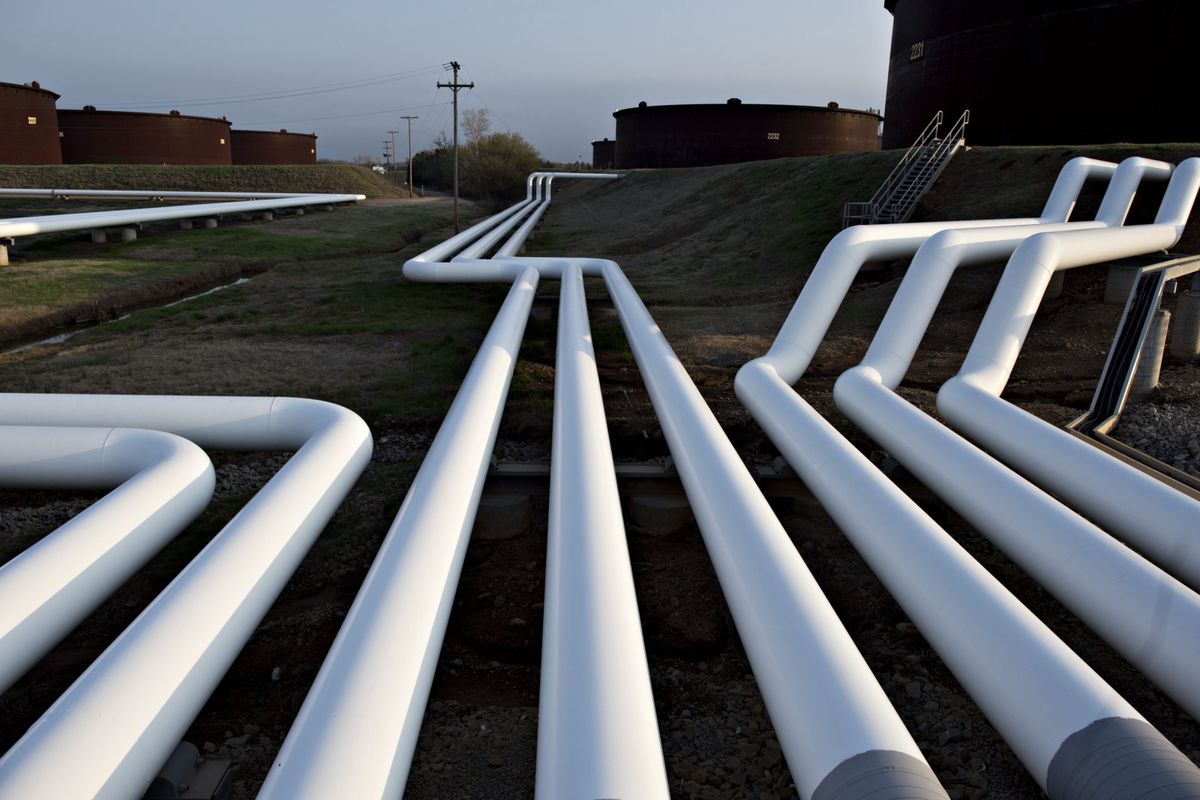Economy
Oil Regains Some Ground After 10% Drop While Demand Fears Linger

(Bloomberg) — Oil eked out a small gain after tumbling 10% on Tuesday as concerns over virus-driven demand destruction overshadowed a historic deal by the world’s biggest producers slash output.
Futures added 2.4% in New York to trade a tad below $21 a barrel. While Saudi Arabia and other Gulf producers have pledged to cut supply starting next month, they continue to flood the market, swelling global stockpiles and testing capacity limits. The world is still choking on too much oil and will run out of places to store it within a month, according to trading giant Gunvor Group Ltd.
In the U.S., industry data indicated American crude stockpiles rose by more than 13 million barrels last week, while a key timespread for New York futures moved deeper into contango, signaling an expanding physical glut.
Oil has lost around two-thirds of its value this year after the coronavirus prompted lockdowns across the world to stem its spread, vaporizing consumption for everything from crude to fuels. The International Monetary Fund estimated that global gross domestic product will shrink 3% in 2020, a signal that energy demand may remain weak longer than anticipated.
“This is a demand driven market at the moment and clearly lockdown measures across most of the world are keeping that under pressure,” said Daniel Hynes, an analyst at Australia & New Zealand Banking Group Ltd. in Sydney. “We expect to see prices remain relatively volatile.”
West Texas Intermediate crude for May added 48 cents to $20.59 a barrel on the New York Mercantile Exchange as of 11:26 a.m. Singapore time. The contract has declined almost 20% in the past three sessions. Brent for June delivery gained 1.3% to $29.98 on London’s ICE Futures Europe exchange after closing 6.7% lower Tuesday.
Dated Brent, the benchmark for two-thirds of the world’s physical supply, was assessed at $20.66 on Tuesday, compared with $23.73 on Thursday.
See also: The Fuel That’s Thriving Amid the World’s Biggest Virus Lockdown
The OPEC+ output deal has only served to avert a complete price collapse, according to Societe Generale SA. The bank forecast Brent will average $30 a barrel in the second quarter, “on the premise that post pandemic normalcy returns, OPEC+ cuts are successful,” and decent compliance.
Saudi Arabia’s crude exports so far in April stand at 9.3 million barrels a day, according to tanker-tracking data compiled by Bloomberg. That compares with 6.8 million barrels a day in the first two weeks of March. There are also at least 10 supertankers with a capacity to haul a combined 20 million barrels waiting to load at the Saudi port of Ras Tanura in the coming days.
The difference between crude production and product demand is about 25 million barrels a day, Gunvor’s co-founder and chief executive officer Torbjorn Tornqvist said. Storage both on land and at sea is filling up as traders rush to find a place for the unwanted crude. “It may be hard to even find a place to store oil three to four weeks from now,” he said.
-

 Real Estate2 months ago
Real Estate2 months agoAl Mouj Muscat Unveils Azura Beach Residences Phase 2: A New Chapter in Waterfront Living
-

 Leaders Speak2 months ago
Leaders Speak2 months agoDhofar International Development and Investment Company: Driving Sustainable Growth and Strategic Synergies in Oman’s Investment Landscape
-

 Economy1 month ago
Economy1 month agoMaal Card: What Oman’s New National Payment Card Means for Everyday Users
-

 Events1 month ago
Events1 month agoOER Corporate Excellence Awards 2025 Honours Entities and Innovations in Oman
-

 OER Magazines2 months ago
OER Magazines2 months agoOER, October 25
-

 Arts and Culture2 months ago
Arts and Culture2 months agoOminvest and Bait Al Zubair Launch “Future Frames” to Empower Youth through Art and AI
-

 News2 months ago
News2 months agoMs. Noor Saldin, Founder of Modern Generation International School, Wins Woman of the Year 2025; School Honored for Empowering Future Female Leaders
-

 News1 month ago
News1 month agoSheikh Suhail Bahwan, Chairman of Suhail Bahwan Group, Passes Away






























